The tranquil atmosphere of sleepy Meissen somewhat betrays the city’s important role in German history. Not only did it serve as the seat for the Duke of Saxony for centuries, but it’s also the birthplace of the famous Meissen China, the first European porcelain.
All of this took place in the Albrechtsburg Castle towering over the town, which is not only historically significant, but also beautifully constructed and well-worth visiting for the wonderful arched ceilings and attractively painted rooms alone.
We recently revisited the castle after a long time, so here’s our up-to-date guide to everything you need to know about exploring the Albrechtsburg.

This post may contain affiliate links, and I might earn a small commission at no additional cost to you. For more info, click here.
History of Albrechtsburg Castle
To understand the castle’s importance, you need to know a little bit about its history. A medieval castle stood on the hill over the Elbe River since at least the 10th century, but the Renaissance building you can visit today was commissioned in the 15th century by Saxony’s Duke Albrecht the Bold.
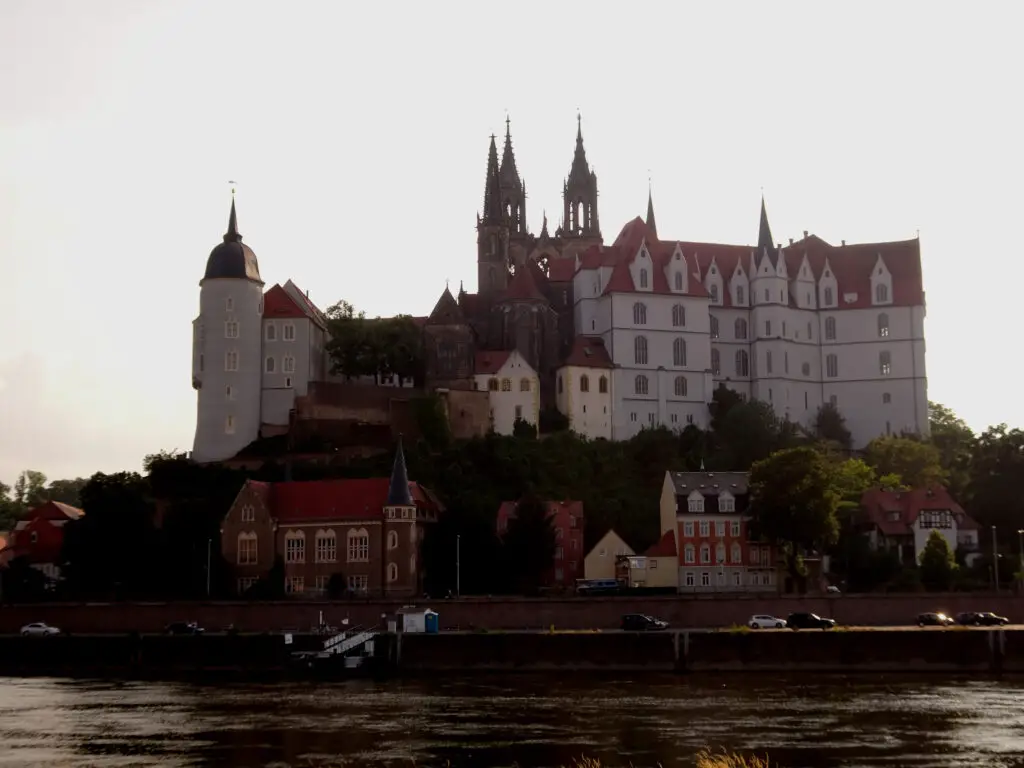
Throughout its history, the castle served different purposes. Initially conceived as a residence for the Albertine branch of the House of Wettin, it later functioned as a royal palace and treasury. In the 18th century, it became a porcelain factory, marking the birthplace of Meissen Porcelain, which was developed here by Johann Friedrich Böttger.
Over the centuries, the castle underwent several renovations and expansions, although it’s still defined by an attractive combination of late Gothic and early Renaissance architectural elements.
What to See at Albrechtsburg Castle
You enter the castle from the magnificent Domplatz Square in the West, which is towered over by the impressive cathedral. Before rushing in, make sure to have a look at the detailed façade of the palace, with its many small spires and cute dormers. The exterior of the stairwell tower is especially attractive.

The Palace Rooms on the First Floor
The visit starts with the representative rooms on the first floor, which for me are the most beautiful parts of the castle. The amazing Banqueting Hall is topped by an amazing vaulted ceiling, while the walls are covered in intricate paintings depicting the ducal family and their entourage.
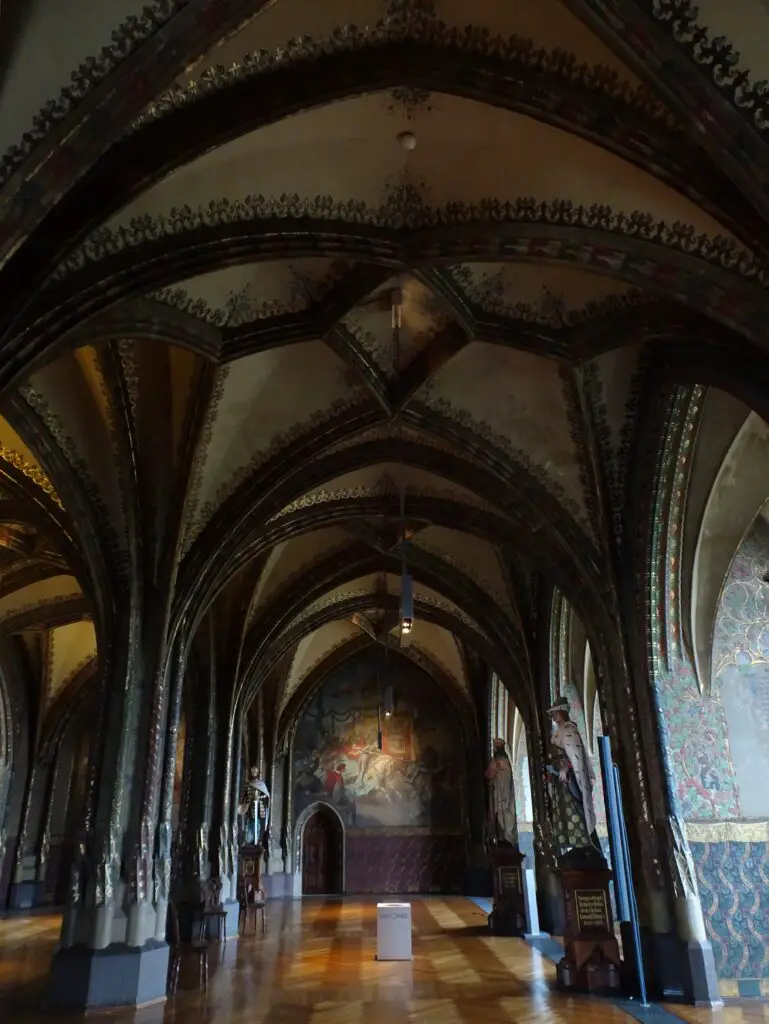
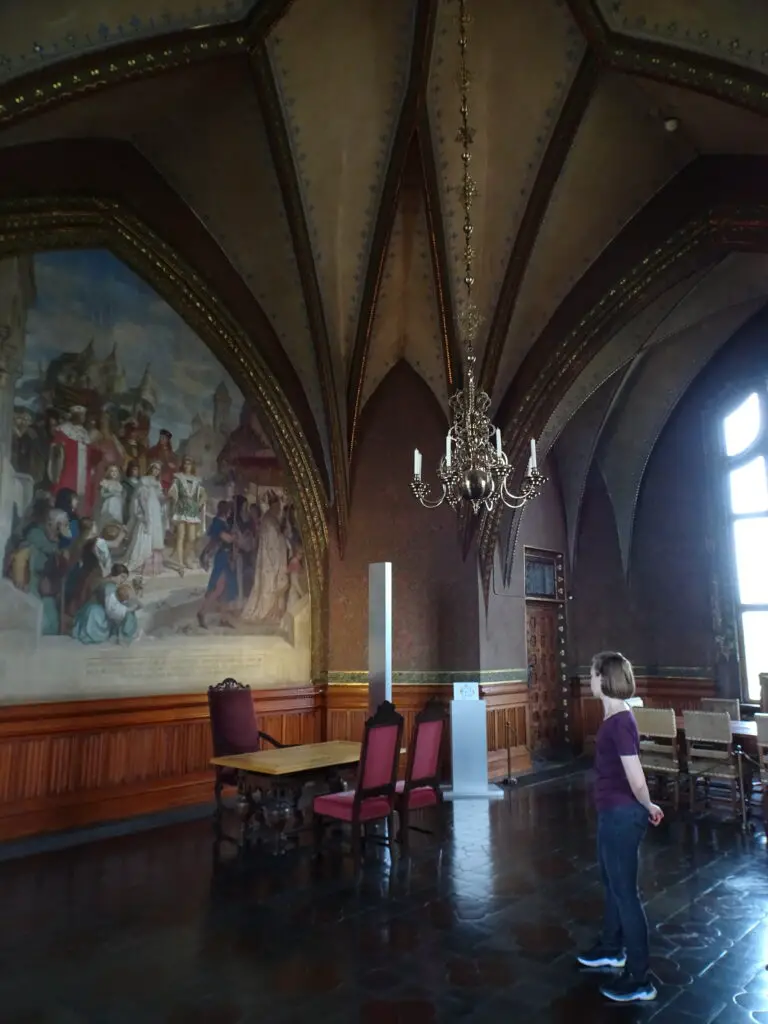
By contrast, the nearby Dancing Hall seems a little more austere, but no less beautiful with its whitewashed walls and grey stone pillars. The room wasn’t only used for social functions, but also contains a small chapel in the corner, which you definitely should check out for its beautiful paintings of a starry night sky with angels.
The rest of this floor contains several office rooms, as well as the former living quarters of the ducal family. Again, I especially liked the super detailed wall paintings, plus there are some interesting pieces of furniture, including a delightful celestial globe.
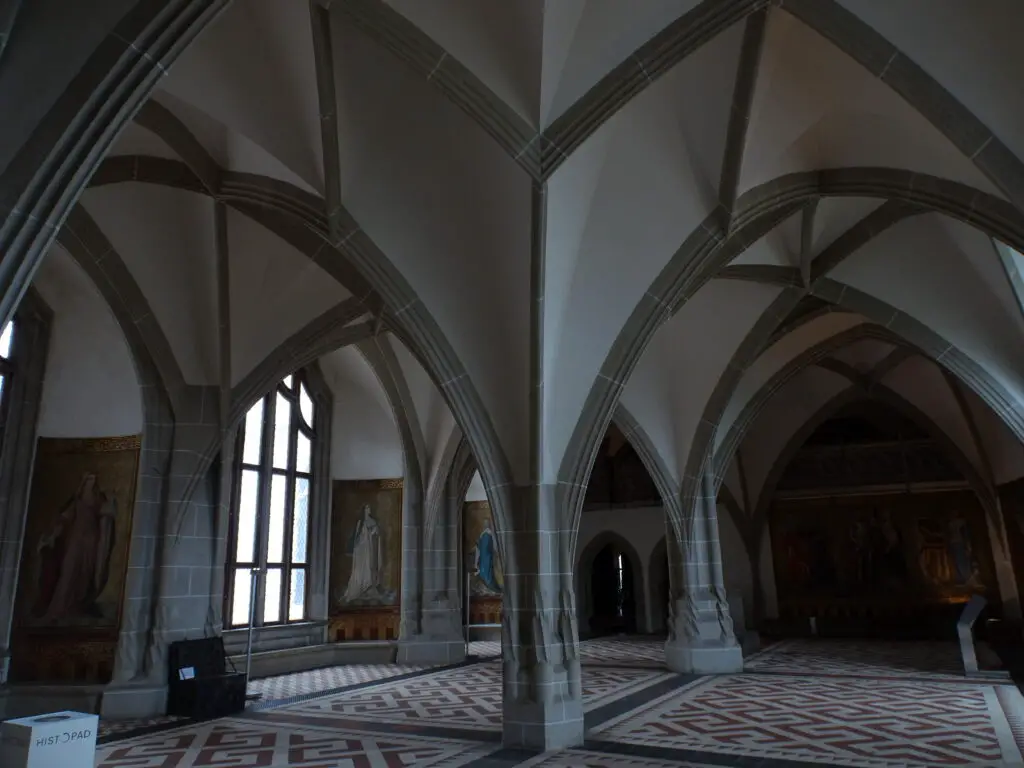
The Porcelain Factory on the Second Floor
The impressive Great Staircase Tower with its intricate central balustrade of carved stone leads up to the second floor, which contains displays and information boards detailing the castle’s role in the development of Meissen China in the early 18th century.
Some pretty porcelain objects are on display, and there are a few more living quarters and administration rooms with impressive interior design.
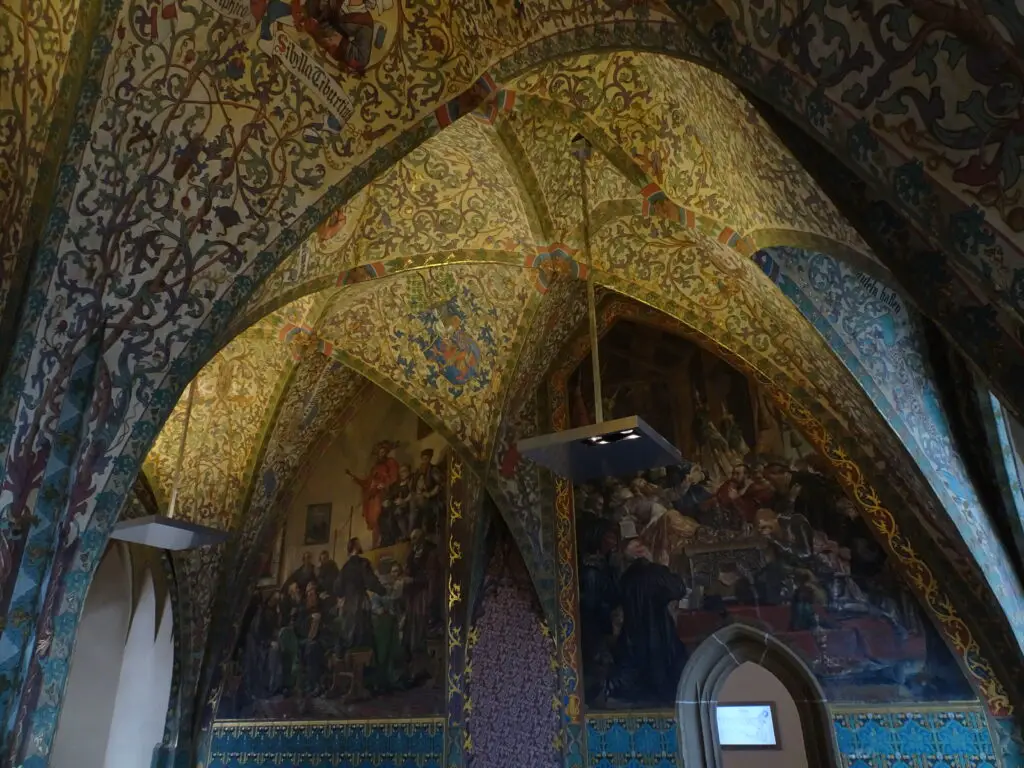
While the history of the castle and factory are certainly interesting, in my opinion this floor pales a little in comparison with the stately rooms of the first floor, although there are again some nice decorative details, including some wonderfully intricate tiled fireplaces in the private rooms of the duke.
Also, make sure to check out the unbelievably detailed floral arabesques on the ceiling in the Große Appelationsstube (Audience Chamber). You can continue upward to the attic, which contains more exhibits on the history of the place, as well as some artefacts uncovered during archaeological investigations.
What’s the Deal with the Histopad?
When visiting the castle, you’ll be handed a tablet, dubbed ‘Histopad’ that’s supposed to enhance your visit. At first, we were sceptical about it, as it seemed a bit gimmicky, but it turned out to actually be a great addition to the visit.
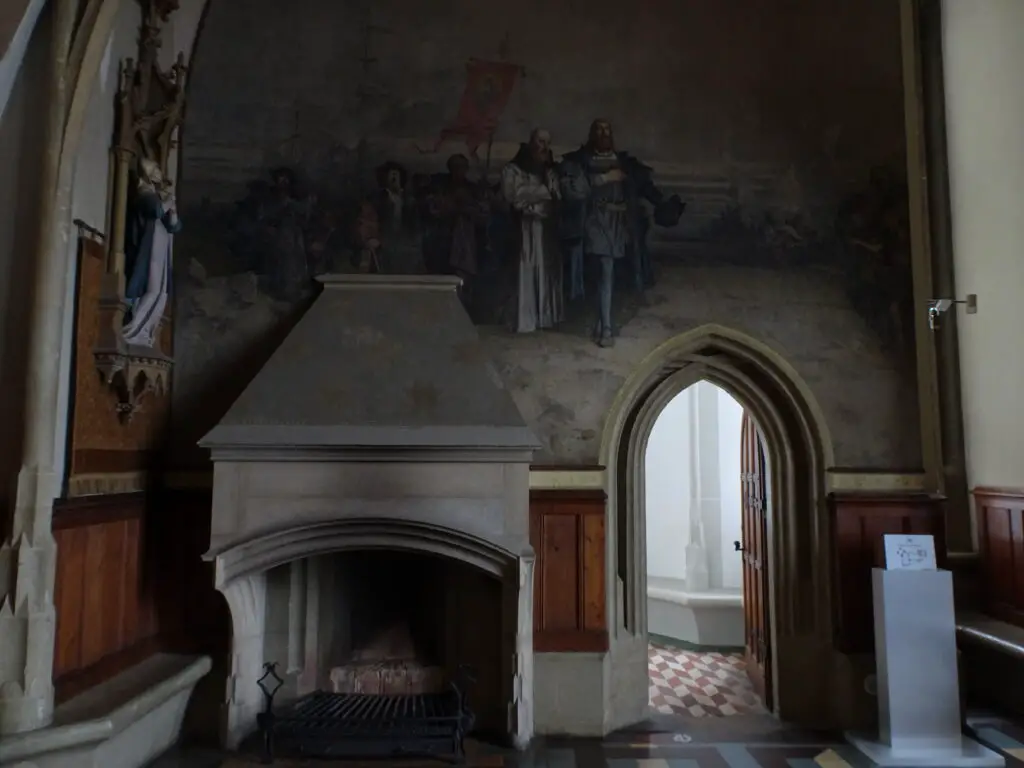
On the pad, you can find information about a lot of architectural details and fixtures in the castle, that don’t have any explanatory signboards. Even better, you’ll get the chance to look at digital recreations of the separate rooms in different time periods – as a residential castle in the 15th century and as a porcelain factory in the 19th century.
Just make sure to use it as a point of comparison and to actually take your time looking around the real castle, as we saw tons of people solely glued to the screen of their tablet, which kind of defeats the purpose.
Meissen Cathedral
Even though Meissen’s impressive cathedral has a separate entrance, it’s part of the architectural ensemble of the castle, which it directly adjoins. It’s pretty impressive, so I suggest taking a peek inside while you’re there (You can get a combination ticket with the castle).

The huge church dates to the early 15th century and features a majestic interior in the late Gothic architectural style. There are some beautiful stained-glass windows and plenty of detailed stone carvings – don’t miss the impressive southern gateway to the main nave, which you can only access from inside the church.
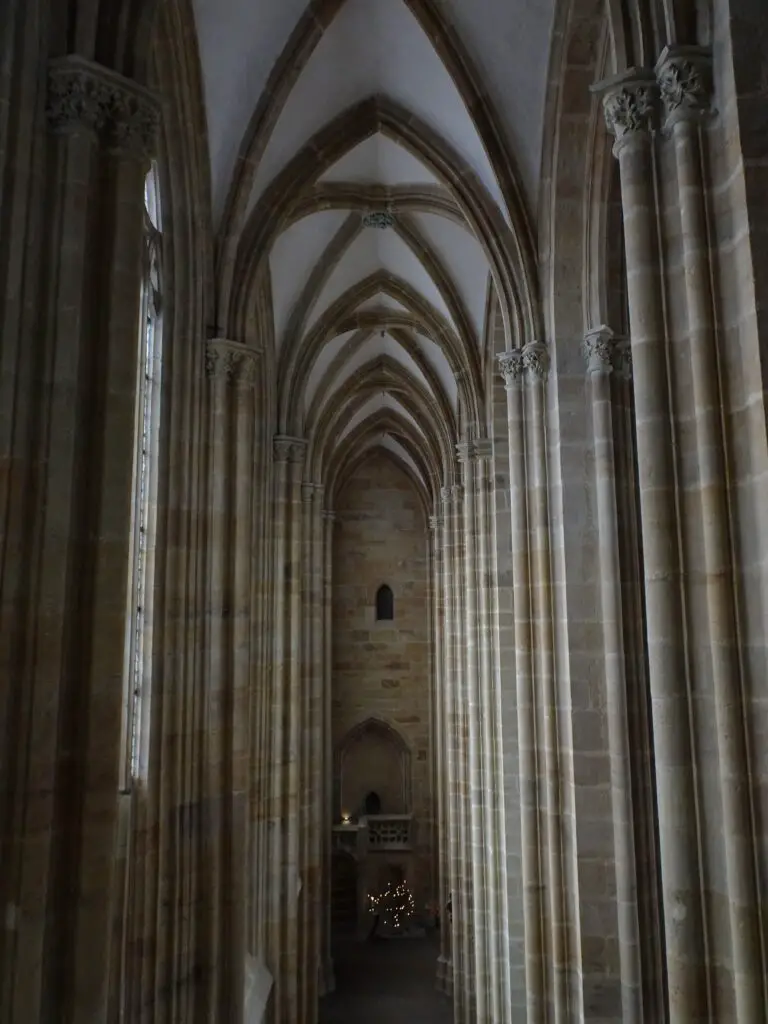
I especially liked the pretty little cloister through which you enter the church, whose courtyard is filled with flowering bushes. At the southeastern corner outside the cathedral, there’s a platform that offers great views over the Elbe River and the surrounding hills.
From here, you can also take a walk along the ramparts for more amazing views. Otherwise, you could cross the cathedral square to the West, walk through the pretty medieval Torhaus (Gateway) and follow the small alleyways down into the city’s historic centre.
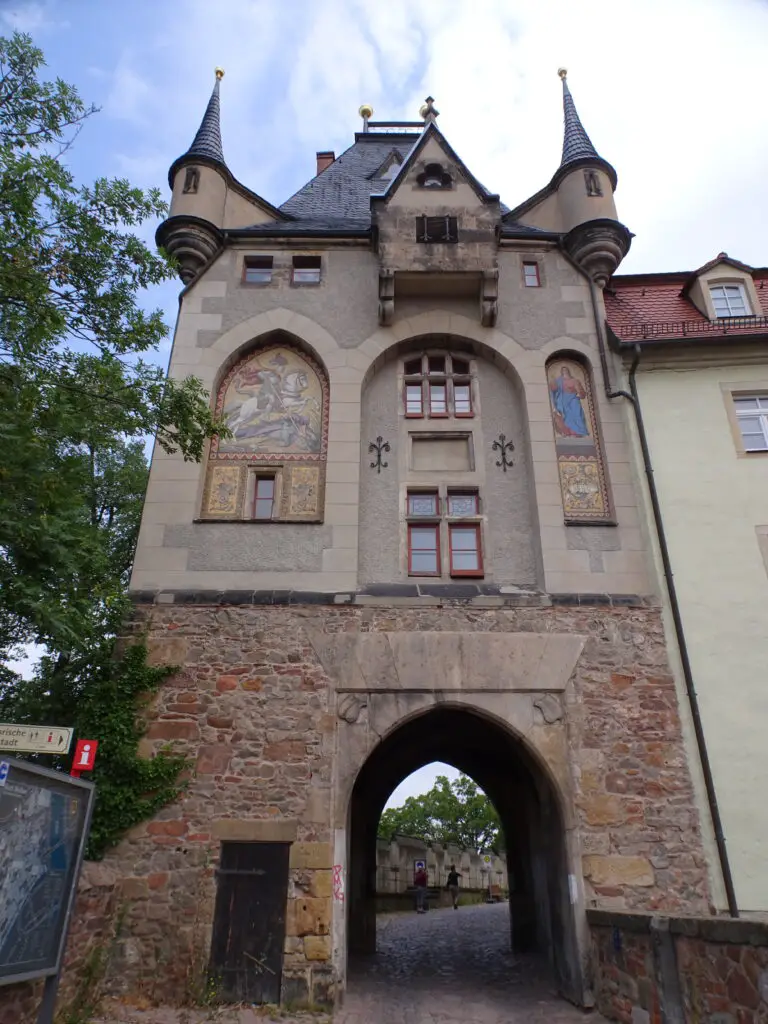
Practicalities
How to Get to Albrechtsburg Castle
Meissen can easily be reached by train from nearby Dresden, which is very much worth visiting for its striking baroque architecture. The S1 Regional Train leaves Dresden’s Main Station twice an hour and takes about 30 minutes to reach Meißen.
From the station, you’ll have to walk west, cross the Elbe River by a pedestrian bridge offering great views of the castle hill, and then continue north through the historic city centre to get to the castle.
Albrechtsburg Castle Entrance Fee
The entrance fee for the castle is 12€ and if you take a combined ticket with the cathedral it’s 16,50€. Other combination tickets include entrance to the current porcelain factory.
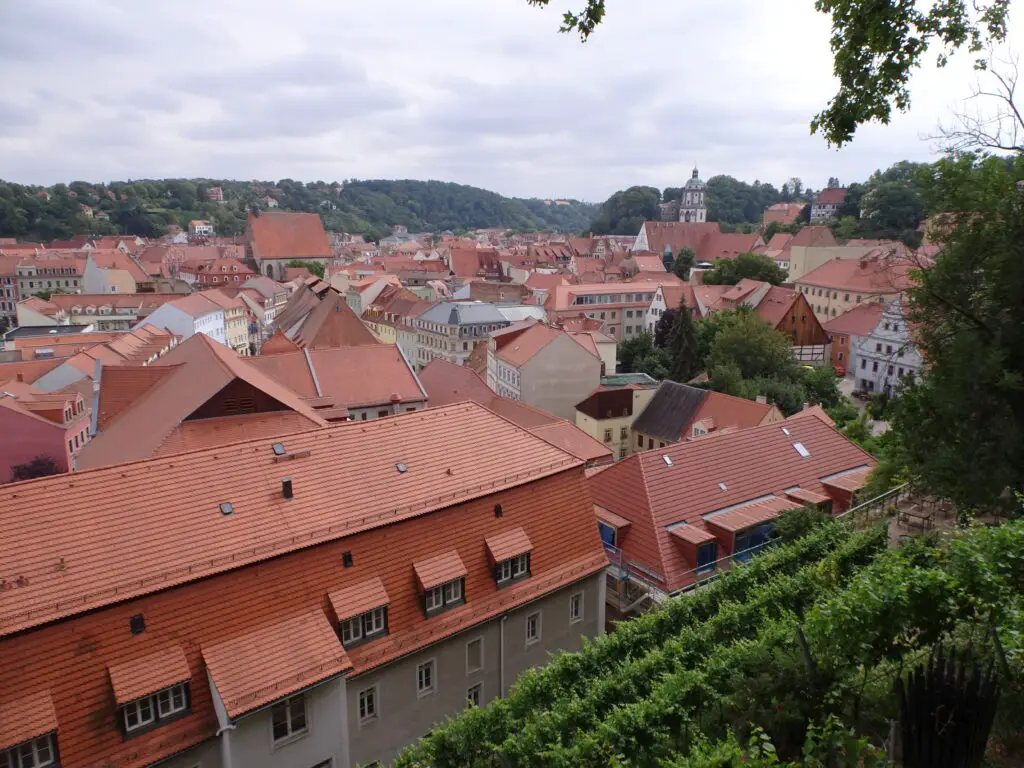
Albrechtsburg Castle Opening Times
Albrechtsburg Castle is open daily from 10am to 5pm. Double-Check the current times on their official site.
Where to Stay in Meissen
The city can easily be visited as a day trip from nearby Dresden, but if you want to soak up a little more of the relaxed small town atmosphere, there are plenty of hotels and guest houses in Meissen.
There are some budget-friendly options, like Hostel Meißen and plenty of mid-range hotels and guest houses like Pension Anja Heil. If you crave a bit of luxury, Dorint Parkhotel Meißen has good reviews.
Where to Go Next
Leipzig, Saxony’s cultural Capital
Colditz, Home to another famous Castle


Having been in Meißen not too long ago myself (although without the time for a visit of the castle), I’d suggest taking the train up to the station Meißen-Altstadt instead of exiting at the main station. From there, it’s either a straight walk to the castle of no more than 10 minutes, or you could take your time and fully experience the historic oldtown with its many buildings from the Renaissance and Baroque and quite a few details that are easily overlooked when rushing through.
Hi Tony,
thanks for your message! You’re right – both about Meißen’s historic centre, which is well-worth taking a stroll through, as well as about the possibility to get off the train at Meißen-Altstadt (although you’ll miss the great panorama of the castle from the pedestrian bridge;-).